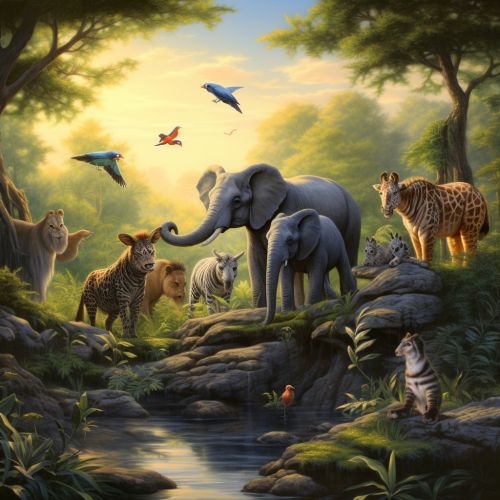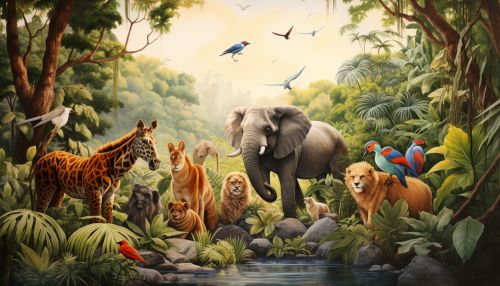Endangered Species
Introduction
Endangered species are those species of animals, plants, fungi, and other organisms that are at risk of becoming extinct. This risk is often due to factors such as habitat loss, predation, disease, or climatic changes. The International Union for Conservation of Nature (IUCN) maintains the Red List, a comprehensive inventory of the global conservation status of biological species. The list categorizes species into nine different categories, ranging from "Least Concern" to "Extinct".
Classification
The IUCN Red List classifies species into several different categories based on their conservation status. These categories include:
- Extinct (EX): No known individuals remaining. - Extinct in the Wild (EW): Known only to survive in captivity, or as a naturalized population outside its historic range. - Critically Endangered (CR): Extremely high risk of extinction in the wild. - Endangered (EN): High risk of extinction in the wild. - Vulnerable (VU): High risk of endangerment in the wild. - Near Threatened (NT): Likely to become endangered in the near future. - Least Concern (LC): Lowest risk; does not qualify for a higher risk category. - Data Deficient (DD): Not enough data to make an assessment of its risk of extinction. - Not Evaluated (NE): Has not yet been evaluated against the criteria.


Causes of Endangerment
There are numerous causes that can lead to a species becoming endangered. These include habitat loss, pollution, overhunting, introduction of invasive species, and climate change.
Habitat Loss
Habitat loss is often caused by human activities such as deforestation, urbanization, and agriculture. As habitats are destroyed or fragmented, species lose their homes and food sources, leading to population decline and potential extinction.
Pollution
Pollution can have devastating effects on species. For example, water pollution can lead to the death of aquatic species, while air pollution can affect both terrestrial and aquatic species.
Overhunting
Overhunting or overfishing can lead to a rapid decline in a species' population. This is particularly true for species that have a slow reproduction rate or are already in low numbers.
Invasive Species
The introduction of invasive species can have a significant impact on native species. Invasive species often outcompete native species for resources, leading to a decline in the native species' population.
Climate Change
Climate change can lead to changes in a species' habitat, making it uninhabitable. It can also lead to changes in food availability and the spread of diseases.
Conservation Efforts
There are numerous efforts being made to conserve endangered species. These include the creation of protected areas, captive breeding programs, and legislation to protect endangered species.
Protected Areas
Protected areas such as national parks and wildlife reserves are created to protect species and their habitats. These areas often have regulations in place to prevent activities that could harm the species or their habitats.
Captive Breeding Programs
Captive breeding programs aim to breed endangered species in captivity with the goal of reintroducing them into the wild. These programs can be crucial for the survival of species that have very low populations in the wild.
Legislation
There are numerous laws and regulations in place to protect endangered species. For example, the Endangered Species Act in the United States prohibits the "taking" of endangered species, which includes actions that harm or kill the species.
